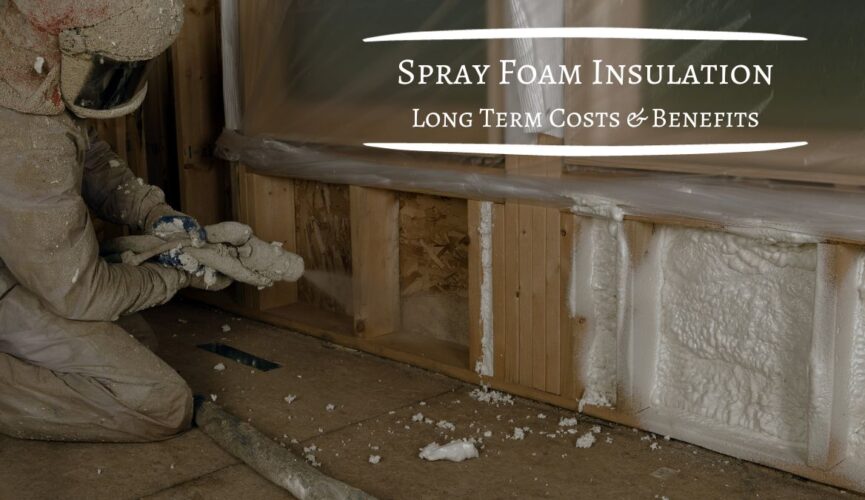Building your dream home is an exciting endeavor, but ensuring it’s comfortable and energy-efficient is paramount. Even in the blueprint stage, insulation choices play a crucial role in the construction process.
Cost Considerations
Creating your ideal home involves various cost considerations, and while spray foam insulation might initially seem expensive compared to cellulose or fiberglass alternatives, it’s essential to weigh its long-term benefits.
Spray foam insulation typically comes with a price tag two to three times higher than traditional options. As you meticulously plan every aspect of your new home, it’s tempting to make cost-saving choices like opting for laminate countertops instead of marble. However, when it comes to insulation, choosing the more affordable option doesn’t necessarily equate to a better outcome.
Spray foam insulation may require a larger upfront investment, but it offers compelling advantages in terms of energy savings and overall comfort. The question arises: is the extra cost of spray foam insulation justified?
Energy Efficiency and Savings
Spray foam insulation stands out as the only material capable of providing a complete air seal for your home, ensuring year-round comfort while enhancing energy efficiency. Regardless of whether it’s the chill of winter or the heat of summer, foam insulation retains the treated indoor air and keeps external elements at bay.
While comfort is invaluable, the cost savings stemming from reduced furnace or air conditioner usage are tangible. This not only reduces your carbon footprint but also keeps monthly energy bills in check.
In contrast, fiberglass and cellulose insulation can help impede some temperature fluctuations but don’t offer the same level of air sealing. Consequently, you’re likely to grapple with high energy bills and discomfort when opting for traditional insulation methods, as they allow air and pollutants to infiltrate.
In terms of numbers, choosing foam insulation can result in energy savings ranging from 15% to 50% on your monthly bills. Over the lifespan of your home, these savings can translate into thousands of dollars.
Long-Term Replacement Costs
Unlike fine wine, fiberglass and cellulose do not improve with age. Over time, you’ll likely need to replace these materials as they degrade, sag, and shift. Replacement may become necessary within 15 years, accompanied by ongoing maintenance requirements.
In contrast, spray foam insulation boasts a maintenance-free, long-lasting performance, provided it’s installed correctly. It’s crucial to select a foam insulation contractor offering a lifetime warranty to ensure lasting results. The only scenario where foam insulation might require replacement is during future remodeling, as it typically endures for the entire home’s lifespan.
Environmental Concerns
One significant consideration with spray foam insulation is its environmental impact, primarily due to the blowing agents used. These agents have a high GWP (global warming potential), measuring their impact on climate change. For context, carbon dioxide has a GWP of 1, while methane, a common emission from various sources, has a GWP of 27 to 30, making it much more potent in causing climate change.
Hydrofluorocarbons (HFCs), often used as blowing agents in spray foam, can have GWPs in the thousands or tens of thousands. Although spray foam can improve insulation and energy efficiency, it can take over a decade for the environmental damage caused by these blowing agents to be offset by energy savings.
To mitigate these environmental concerns, homeowners can seek installers using low-GWP or eco-friendly spray foam insulation. Some alternatives utilize low-GWP blowing agents, offering a greener option. Another environmentally conscious choice is soybean-based spray foam, which is renewable and has a lower environmental footprint. Additionally, opting for professional installation can ensure a responsible application, optimizing both insulation performance and sustainability.
Conclusion
In conclusion, the decision to invest in spray foam insulation for your new home should be based on a comprehensive assessment of your priorities. While it carries a higher upfront cost, its long-term benefits, such as enhanced energy efficiency, reduced replacement expenses, and superior comfort, make it a compelling choice for many homeowners. Additionally, by considering environmentally friendly options and professional installation, you can further optimize the performance and sustainability of your insulation, ensuring a cozy and eco-conscious living space.

